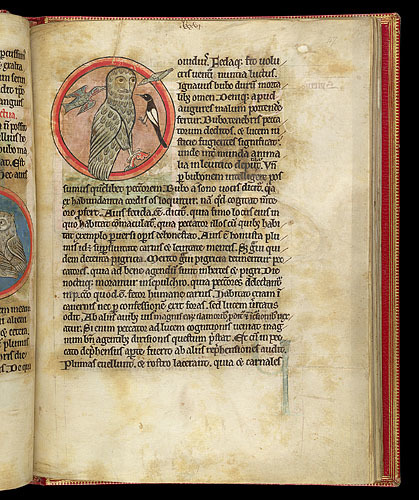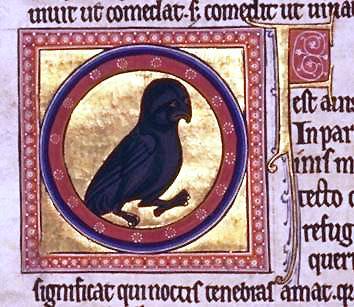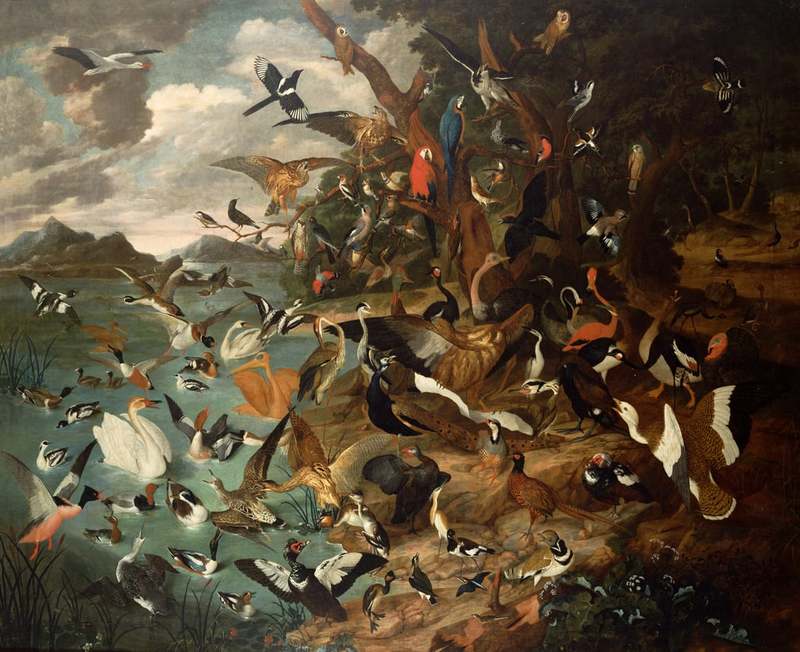The Middle Ages
The Middle Ages have notable mentions of the owl throughout literature and artwork. However, the dominant characterization of owls in Europe during this period was negative in conotation as in the case of Aberdeen's Beastiary, though this was not always the case, with the Owl and Nightingale being a positive depiction. Both intepretations are explored in the items below

The Swedish Warriors
In Uppsala, Sweden a burial site that has been in use for approximately a millenia until the eleventh or twelfth century A.D. Within this burial site the bedding was stuffed with feathers from a variety of birds including the eagle-owl, but even more peculiarly, one of the boats contained a beheaded eagle-owl. It is believed that the eagle-owls were used as hunting companions and during the burial it's head was removed as a ritual to ensure that they would not return back from the dead.

The Owl and the Nightingale Illustration
The Owl and the Nightingale is a medieval poem which details a conversation between the two titular birds: the owl and the nightingale. The connection between the owl character in the poem and the quality of wisdom is something that has been noted by various historians who have supposed that the poem is an allegory for the contrast between wisdom, the owl, and love, the nightingale (Matlock). Therefore, the poem acts as proof that the archetypal wise owl remained well maintained throughout the Middle Ages.

Aberdeen's Beastiary
In this comprehensive beastiary of old England, the owl and tis genealogical companion, the night-owll, are percevied to be direct representations of sinners. To quote the translated transcript of the elusive author of this mid 16th century document, "[the owl] it is classed among the unclean creatures in Leviticus. Consequently, we can take the owl to mean any kind of sinner" (Aberdeen Beastiary, Folio 50). Going on to describe the bird as a filthy one, morally bound to the darkness and unwilling to coexist peacefully, the Aberdeen Beastiary paints the vivid picture that the owl's perception in England during the middle ages is one of utter disdain. Much of this growing hatred toward the once regarded wise owl can be attributed to the growing religious instability in Europe during the 16th century and the belief that the "devil" and his worshipers were amongst man at all times.

The Parlement of Foules
In this extensive 14th century poem by poet Geoffrey Chaucer, the notion of St. Valentines Day as a notable day for those romantically inclined. Telling the story of a love-struck young man dreaming of a courtyard filled with birds looking for their suitors, the poem illustrates a lively debate between a series of birds over the proper attributes of love and courtship. Amongst these birds, the owls appear briefly, associated exclusively with death and the notion of fragility in love. Not involved in the romantic discourse, nor looking for a mate themselves, the representation of the owl as a death bringer aligns with the middle age's interpretation of the owls as malicious birds.